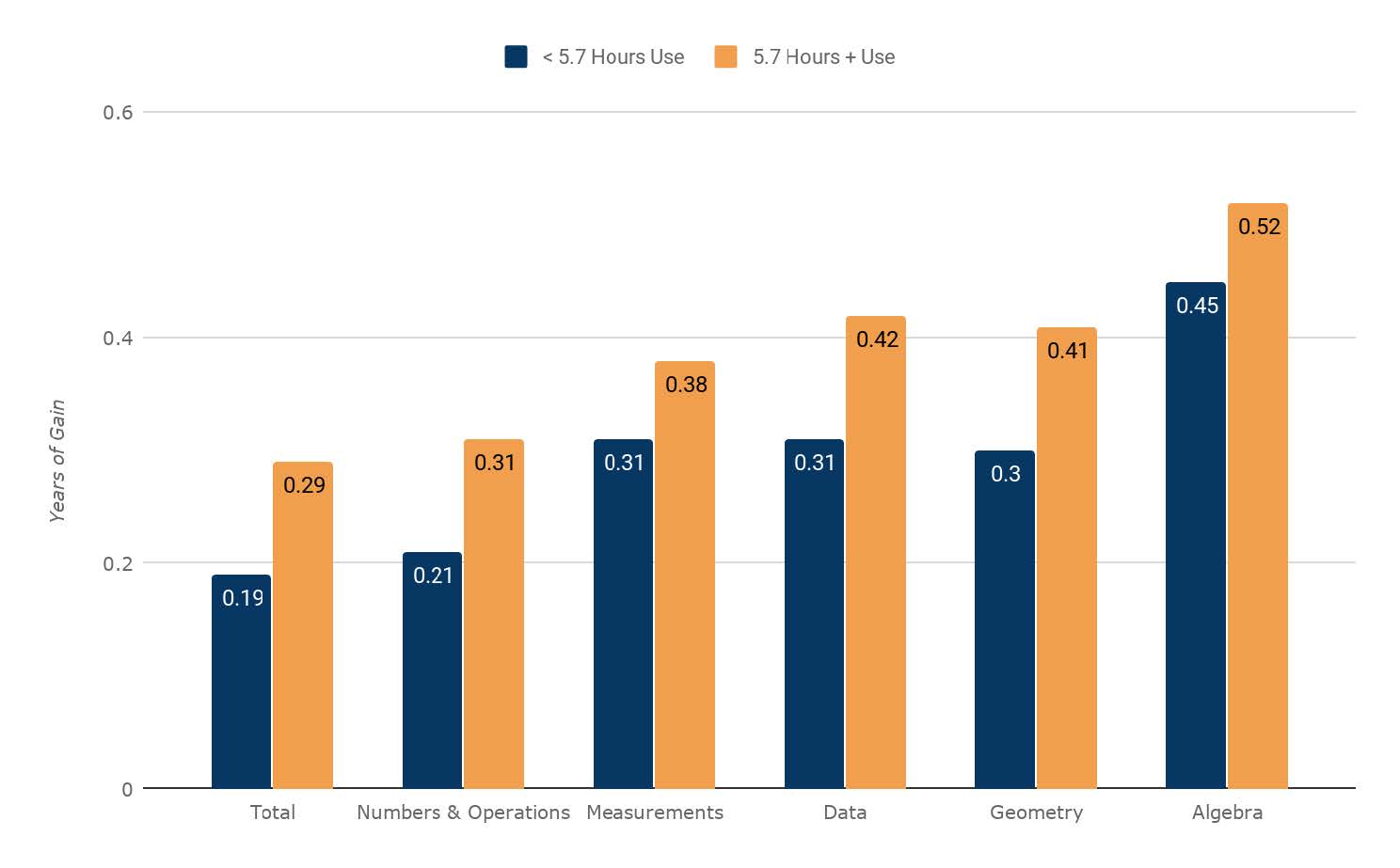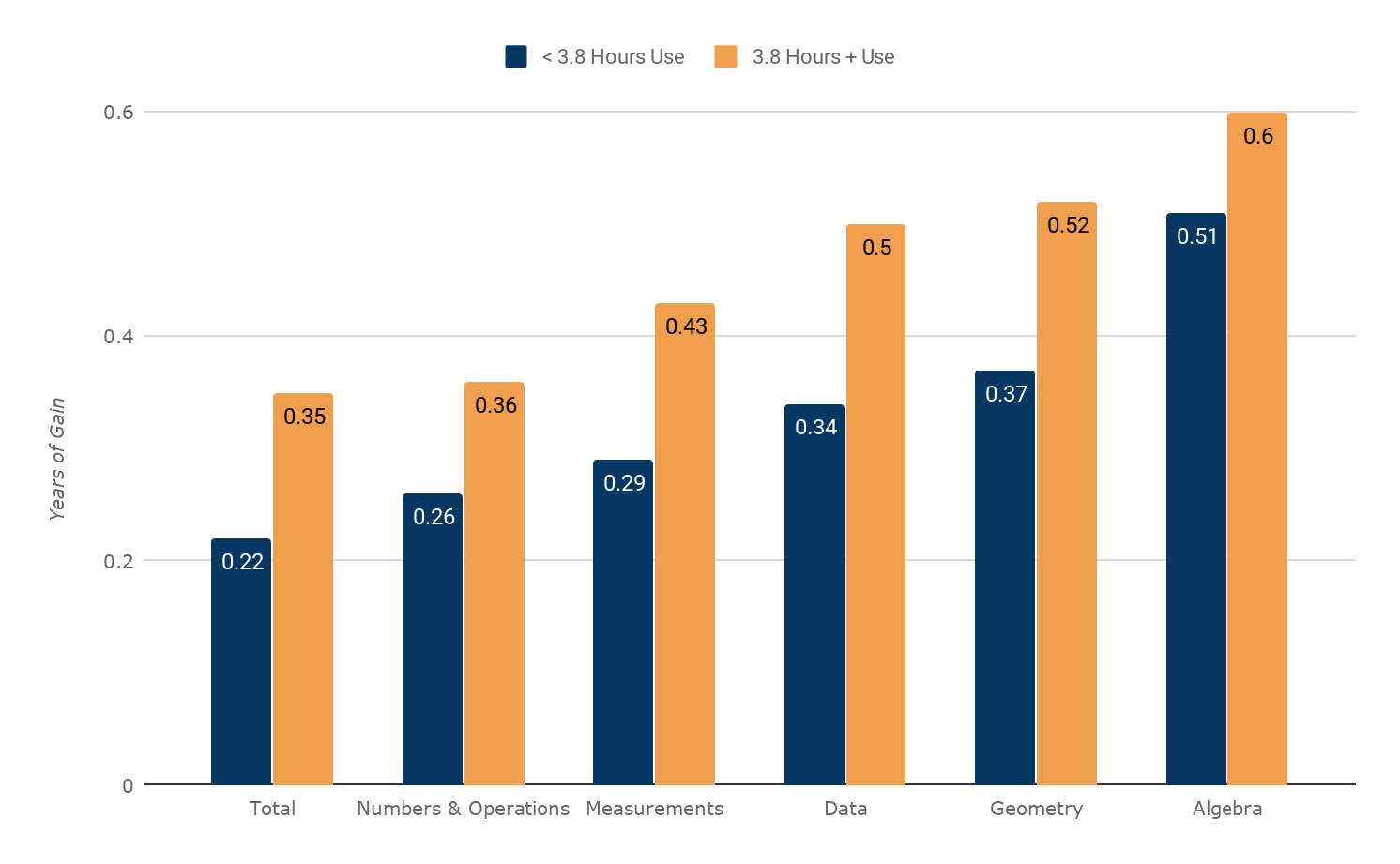You don’t need to consult the myriad statistical reports during COVID-19 to know that most students have suffered a learning loss. And students who entered the pandemic below grade level have of course suffered most. How can teachers and learners recover?
First, let’s look at the phrase itself. In a recent article in Ed Week, Tommy Thompson asks a very lucid question: What does the phrase learning loss mean? What standards have been lost? What actionable data can we glean from reports that tell us the number of months our students are behind? The simple answer is that all the laments get us nowhere.
Let’s Go Learn’s adaptive diagnostic assessments and instructional systems have been used for over 20 years to determine and remediate learning gaps in math and ELA/reading.
We know where to start. It’s the same place that effective teaching and learning always start. With an evidence-based diagnostic. At Let’s Go Learn, we agree with Thompson’s recommendation: “Educators that administer an assessment before instruction are better equipped to know where students are in relation to the desired course outcomes.” To take meaningful action teachers have to know where learning gaps exist. We have to provide each student with a granular diagnostic assessment that measures “present levels” as defined in special education versus grade level instructional goals. Then we can plan learning activities that are at each student’s Zone of Proximal Development in the specific content gap.
We know our system works. Let’s Go Learn’s adaptive diagnostic assessments and instructional systems have been used for over 20 years to determine and remediate learning gaps in math and ELA/reading. A case study that is particularly pertinent took place at Montebello USD in the summer of 2017 and 2018.
Montebello case study. Montebello used Let’s Go Learn’s assessments and instructions in two 14-day summer programs designed for students in grades 2 to 8. All of these students were RTI Tier 2 students in reading and/or mathematics meaning they were non-proficient on the state assessment (SBAC/CAASP). Students took Let’s Go Learn’s online diagnostic before summer school began and then used these as pretests.
MONTEBELLO UNIFIED SCHOOL DISTRICT, CA

The results? In the summer of 2017, all students who used our online reading instruction for more than 6.4 hours measured a gain of over one-half year in comprehension and a gain in decoding skills from three months to one year. In the summer of 2018, students who used our instruction for more than 5.2 hours measured a gain in comprehension of over one-half year and a gain in decoding from 4 months to one year.
We know where to start. It’s the same place that effective teaching and learning always start. With an evidence-based diagnostic. At Let’s Go Learn, we agree with Thompson’s recommendation: “Educators that administer an assessment before instruction are better equipped to know where students are in relation to the desired course outcomes.” To take meaningful action teachers have to know where learning gaps exist. We have to provide each student with a granular diagnostic assessment that measures “present levels” as defined in special education versus grade level instructional goals. Then we can plan learning activities that are at each student’s Zone of Proximal Development in the specific content gap.
2017 MATH GAINS BY LGL MATH EDGE USAGE

RESULTS: Low usage was 446 students using LGL Math Edge for less than 5.7 hours. Medium usage was 441 students using LGL Math Edge for over 5.7 hours. Gains were high as measured by the ADAM assessment. Students in the low-use group made 0.19 years of gain in the ADAM total score. This is equivalent to about 2 months of school. In the high-use group, gains were 0.29 years or just below 3 months of school. The other strands that combine to make the total score also had high gains.
2018 MATH GAINS BY LGL MATH EDGE USAGE

RESULTS: Low usage was 446 students using LGL Math Edge for less than 3.8 hours. Medium usage was 441 students using LGL Math Edge for over 3.8 hours. Gains were high as measured by the ADAM assessment. Students in the low- use group made 0.22 years of gain in the ADAM total score. This is equivalent to about 2 months of school. In the high-use group, gains were 0.35 years or just below 4 months of school. The other strands that combine to make the total score also had high gains.
It’s no mystery. COVID-19 has doubled down on the challenges that teachers face in order to realize equity and optimal achievement for each student. But we know that to recognize gains we must close gaps regardless of a student’s age or grade level.
Measure learning gains rather than lament learning loss with Let’s Go Learn digital tools. We know how to support you with specific, actionable data and personalized instruction.


Leave A Comment